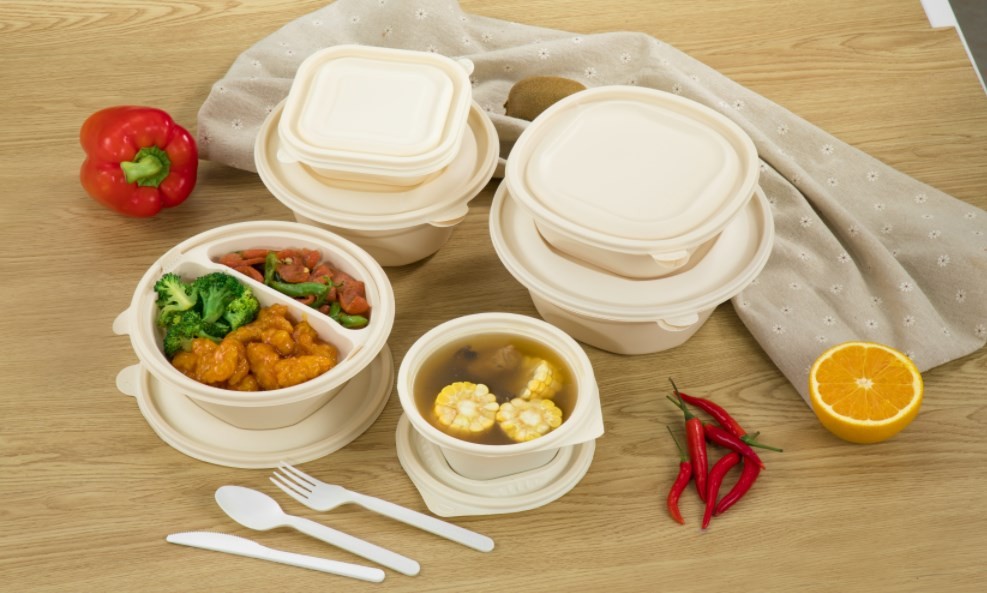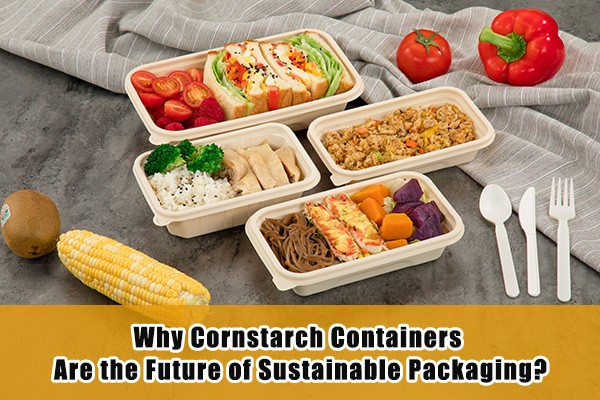As consumers become increasingly conscious of their environmental impact, the demand for sustainable packaging continues to rise. In the quest for eco-friendly alternatives, cornstarch containers have emerged as a promising solution. These containers are made from plant-based materials and offer a renewable and biodegradable option for storing and transporting goods.
In addition to being more sustainable, cornstarch containers also offer several benefits over traditional packaging. They are lightweight, reducing transportation costs and carbon emissions. They are sturdy and leak-resistant, ensuring the safe delivery of goods. They are also microwave and freezer-safe, providing convenience to consumers.
Not only are cornstarch containers suitable for food packaging but they can also be used for a wide range of products, from personal care items to electronics. With their versatility and eco-friendly properties, it’s no wonder that these containers are poised to become the future of sustainable packaging.
In conclusion, the rise of cornstarch containers presents an exciting opportunity for businesses to meet consumers’ growing demand for sustainable packaging. By embracing these innovative solutions, companies can contribute to a greener future while benefiting from improved brand reputation and customer loyalty.

Part I. The environmental impact of traditional packaging materials
Traditional packaging materials, such as plastic and Styrofoam, have a significant negative impact on the environment. Plastic takes hundreds of years to decompose, leading to pollution in oceans and landfills. Styrofoam, on the other hand, is not only non-biodegradable but also releases harmful chemicals when produced and disposed of. The production of these materials also contributes to greenhouse gas emissions, further exacerbating climate change.
Part II. Advantages of cornstarch containers over traditional packaging
Cornstarch containers provide several advantages over traditional packaging materials. Firstly, they are lightweight, reducing transportation costs and carbon emissions. As companies strive to reduce their carbon footprint, the weight of packaging plays a crucial role in achieving this goal. Secondly, cornstarch containers are sturdy and leak-resistant, ensuring the safe delivery of goods. This makes them suitable for a wide range of products, from fragile items to liquids. Additionally, cornstarch containers are microwave and freezer-safe, providing convenience to consumers.
Part III. Types of Cornstarch Containers
Disposable cornstarch container, also known as biodegradable or compostable packaging, offers an eco-friendly alternative to traditional plastic packaging.
- Disposable Cornstarch Lunch Box: Cornstarch-based food containers come in various sizes and shapes, suitable for hot and cold foods. They are often used for soups, salads, rice, and other takeaway meals.
- Disposable Cornstarch Cutlery: Disposable cutlery such as forks, knives, spoons, and even chopsticks can be made from cornstarch. They are sturdy enough for single use and are an excellent choice for picnics and fast-food establishments.
- Disposable Straws: Biodegradable straws made from corn starch are a sustainable alternative to plastic straws. They can be used for both hot and cold beverages.
- Cornstarch Cups: Available for hot and cold drinks, including coffee, tea, and soft drinks. Some options include insulated cups for hot beverages.
- Clamshell Containers: These hinged-lid containers are commonly used for serving burgers, sandwiches, and other fast-food items. They are available in various sizes.
- Sushi Trays: Corn starch-based sushi trays are used in restaurants and for takeout sushi orders. They are designed to hold sushi rolls and other Japanese dishes.
- Soup Bowls: Specialized corn starch-based soup bowls are designed to hold hot soups and stews.
Part IV.The process of making cornstarch containers
The production of cornstarch containers involves several steps. First, cornstarch is extracted from corn kernels through a process called wet milling. The extracted cornstarch is then mixed with water and other natural additives to form a biodegradable polymer. This polymer is then molded into various shapes and sizes to create the containers. The manufacturing process of cornstarch containers is energy-efficient and generates less waste compared to traditional packaging materials.
Part V. Biodegradability and compostability of cornstarch containers
One of the key advantages of cornstarch containers is their biodegradability and compostability. When exposed to moisture and microorganisms, cornstarch containers break down into organic matter, carbon dioxide, and water within a relatively short period. This means that they can be composted and returned to the earth as nutrient-rich soil. Unlike plastic, which persists in the environment for centuries, cornstarch containers have a minimal ecological impact.
Cost-effectiveness of cornstarch containers
Contrary to popular belief, cornstarch containers can be cost-effective for businesses. While the initial cost of production may be slightly higher than traditional packaging materials, the long-term benefits outweigh the investment. For instance, the lightweight nature of cornstarch containers reduces transportation costs, leading to savings in fuel consumption and logistics. Additionally, the positive brand image associated with sustainable packaging can attract eco-conscious consumers, resulting in increased sales and customer loyalty.
Tips for choosing and using cornstarch containers for packaging
When choosing cornstarch containers for packaging, there are a few factors to consider. Firstly, ensure that the containers are certified as compostable and meet relevant industry standards. Look for labels such as “ASTM D6400” or “EN 13432” to ensure the containers’ credibility. Secondly, consider the specific needs of your products. Cornstarch containers come in various sizes and shapes, so choose the ones that best suit your requirements. Lastly, educate your customers about the composting process and the importance of disposing of the containers properly.
Challenges and limitations of cornstarch containers
While cornstarch containers offer numerous benefits, there are also some challenges and limitations to consider. For instance, they may not be suitable for products that require a longer shelf life, as their biodegradable nature means they break down over time. Additionally, cornstarch containers may have limitations in terms of heat resistance, which could be a concern for certain food items. However, ongoing research and development in the field of sustainable packaging are addressing these challenges, offering hope for future improvements.
Conclusion: Embracing the future of sustainable packaging with cornstarch containers
The rise of cornstarch containers presents an exciting opportunity for businesses to meet consumers’ growing demand for sustainable packaging. By embracing these innovative solutions, companies can contribute to a greener future while benefiting from improved brand reputation and customer loyalty. Cornstarch containers offer advantages such as lightweight, leak-resistance, and microwave-safe properties, making them suitable for a wide range of products. With their biodegradability and compostability, cornstarch containers are poised to become the future of sustainable packaging.
